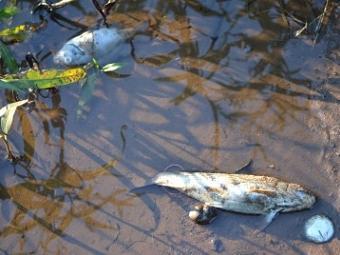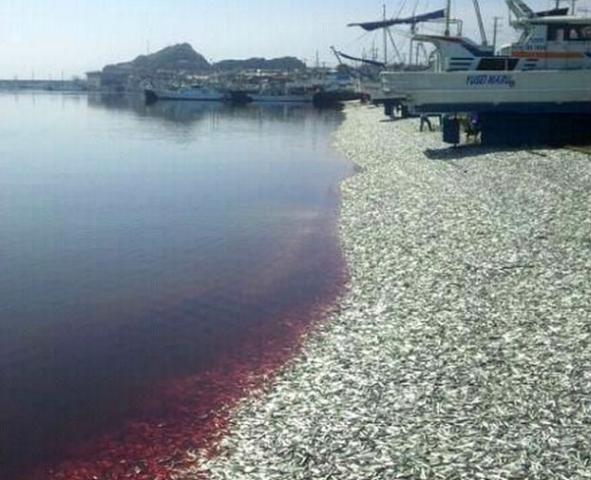
Section Branding
Header Content
Fish Kill: An International Problem
Primary Content

This story from Discovery News caught my attention for its shear shock value. The scene below looks just like a pebbly shoreline. But, it isn’t at all. That entire “shoreline” is awash with dead sardines washed ashore the day after a storm in Japan’s port Ohara. The fish began to wash ashore on June 3 and locals are scrambling to clean up the waste.

Discovery News reported this alarming fish kill at Ohara port in Japan.
I was further shocked when this “beach” of dead fish in Japan was compared to the massive Ogeechee fish kill here in Georgia last year, a problem that may be happening again at Briar Creek. Thousands of dead fish were found along 70 miles of the Ogeechee River last May. Lab tests showed they died from a disease that typically only affects fish stressed by environmental changes. Water samples taken last August showed “extremely high levels of formaldehyde as well as above-normal levels of nitrogen, ammonia and sulfates.”
The common link between the two fish kills may be a lack of oxygen. The fish are surrounded by water, which is how they prefer it, but that water has to have a certain oxygen saturation to maintain life. And, the oxygen required by aquatic species is not the same across the board. For example, catfish need less oxygen than, say, salmon. Similarly, those creatures living at the bottom depths of the ocean presumably need less oxygenated water than those which live higher up in the sea, where there is generally more oxygen.
The current theory for the Japanese fish kill is that “possibly an oxygen-poor water column in the ocean caused the sardines to sweep into the harbor with a storm the day before. As a result, the oxygen levels in the area may have dipped too low and killed the fish.”
By contrast, the Ogeechee fish kill was traced back to improper waste management by King America Finishing, a textile processor upriver from the kill. That company has been fined $1 million to clean the river. The chemical fire retardant that was dumped into the river decreased the oxygen levels so severely that it killed over 38,000 fish in the area.
As an environmental asset, Georgia's waterways are a mainstay of industry supporting tourism, trade, fishing, and relaxation for millions of people each year, not the least of whom are those living along the waterways. Keeping these areas clean and safe is vital to maintaining health for Georgia's citizens and economy.
Secondary Content
Bottom Content





